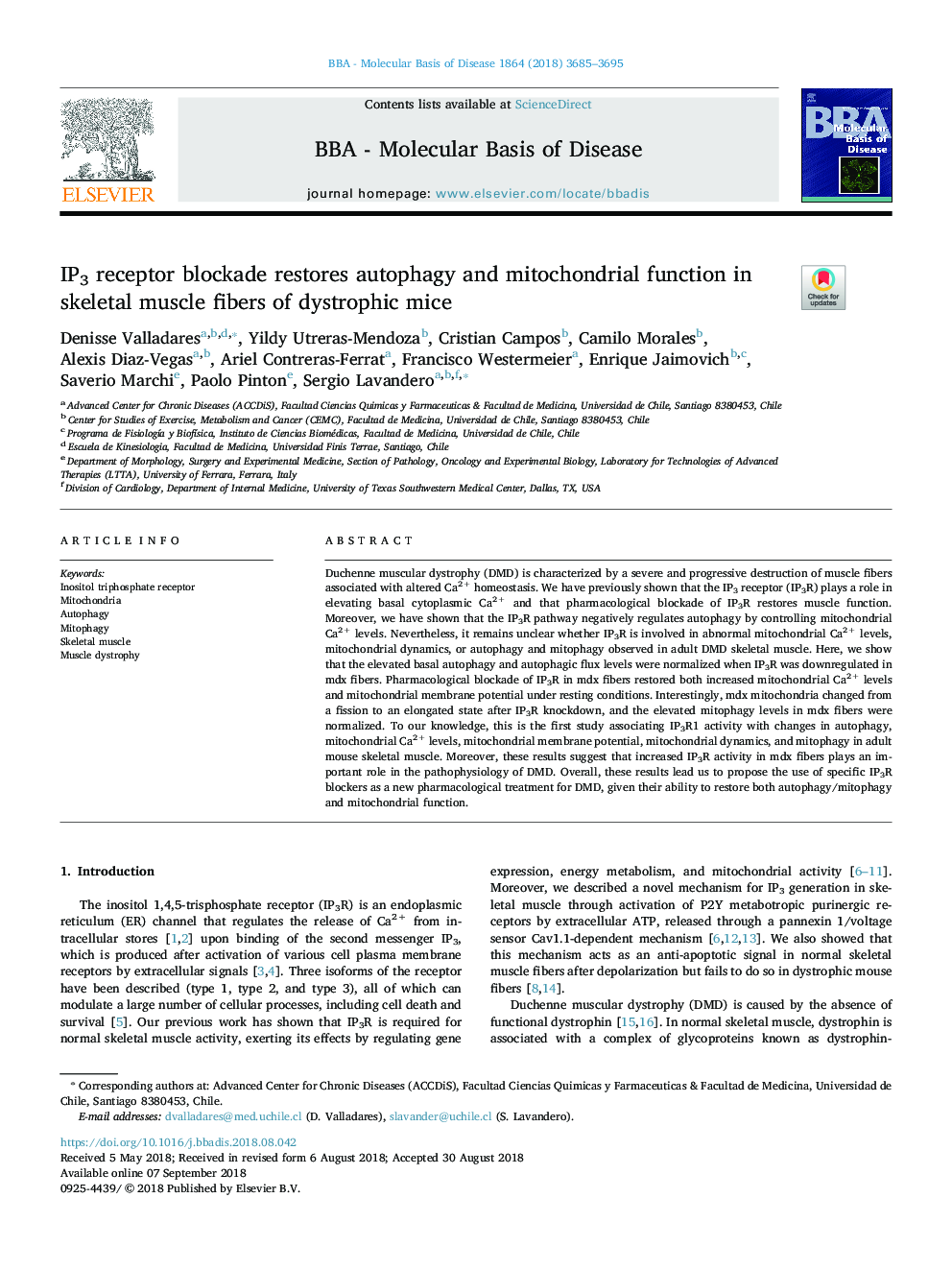| Article ID | Journal | Published Year | Pages | File Type |
|---|---|---|---|---|
| 10136981 | Biochimica et Biophysica Acta (BBA) - Molecular Basis of Disease | 2018 | 11 Pages |
Abstract
Duchenne muscular dystrophy (DMD) is characterized by a severe and progressive destruction of muscle fibers associated with altered Ca2+ homeostasis. We have previously shown that the IP3 receptor (IP3R) plays a role in elevating basal cytoplasmic Ca2+ and that pharmacological blockade of IP3R restores muscle function. Moreover, we have shown that the IP3R pathway negatively regulates autophagy by controlling mitochondrial Ca2+ levels. Nevertheless, it remains unclear whether IP3R is involved in abnormal mitochondrial Ca2+ levels, mitochondrial dynamics, or autophagy and mitophagy observed in adult DMD skeletal muscle. Here, we show that the elevated basal autophagy and autophagic flux levels were normalized when IP3R was downregulated in mdx fibers. Pharmacological blockade of IP3R in mdx fibers restored both increased mitochondrial Ca2+ levels and mitochondrial membrane potential under resting conditions. Interestingly, mdx mitochondria changed from a fission to an elongated state after IP3R knockdown, and the elevated mitophagy levels in mdx fibers were normalized. To our knowledge, this is the first study associating IP3R1 activity with changes in autophagy, mitochondrial Ca2+ levels, mitochondrial membrane potential, mitochondrial dynamics, and mitophagy in adult mouse skeletal muscle. Moreover, these results suggest that increased IP3R activity in mdx fibers plays an important role in the pathophysiology of DMD. Overall, these results lead us to propose the use of specific IP3R blockers as a new pharmacological treatment for DMD, given their ability to restore both autophagy/mitophagy and mitochondrial function.
Keywords
Related Topics
Life Sciences
Biochemistry, Genetics and Molecular Biology
Ageing
Authors
Denisse Valladares, Yildy Utreras-Mendoza, Cristian Campos, Camilo Morales, Alexis Diaz-Vegas, Ariel Contreras-Ferrat, Francisco Westermeier, Enrique Jaimovich, Saverio Marchi, Paolo Pinton, Sergio Lavandero,
